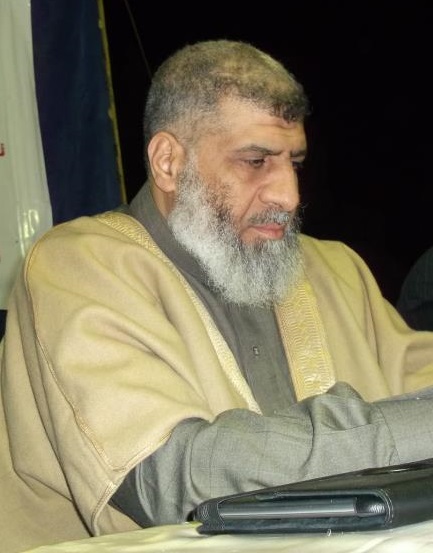CAIRO: Fifteen young girls sat around two tables in a classroom at the Egyptian Museum, molding rakes and water pumps out of red clay. They are participating in the museum’s program to teach schoolchildren about Egyptian agriculture during Pharaonic times.
In many museums, one might expect posters and pictures on the walls to inspire the childrens’ sculpting, but these walls are bare. The only hints of the museum are the busts of pharaohs and wooden models of hammers scattered on the tables.
The classroom uses these models, not pictures, because the schoolgirls are blind. Touch is their window to the world.
The Egyptian Museum has some of the most extensive programs for blind youth in the world.
“There are more than 2 million blind people in Egypt. This is a number we cannot ignore, said Wafaa El Saddik, director of the Egyptian Museum. “We want to integrate them into society. Our guides teach them the history of Egypt in a lively way.
According to those who work with the blind in Egypt, museum tours can teach people more than history. They can be important tools for teaching skills that will help them in all areas of life.
Soraya Metwally, former director of the Egyptian Social Affairs Ministry’s Department of Social Rehabilitation and Care for the Handicapped, and a member of the Arabs United for the Blind, praised the Egyptian Museum’s classes.
She believes that education and training of blind people must be expanded in Egypt to help them find work. The museum classes could be part of this.
Ahmed Mohamed Naguib Saeed, an Egyptian Museum staff member who designs programs for the blind and is blind himself, agreed with Metwally. “[Our program] provides them with experience which is important because people often keep [the blind] inside in a safe place. We try to integrate them to help them later in life, he said.
The Museum’s current programs are mostly for schoolchildren, aged 5 to 18. But they are trying to expand the programs to include tours for blind people of all ages.
Curator Sara Marei returned at the end of October from “The Art of Description: Tools and Techniques for Teaching People Who are Blind or Partially Sighted, a conference at the Metropolitan Museum in New York, organized by the US non-profit, Art Beyond Sight, on how to make museums more accessible to the blind. Marei gave a presentation on how museums can work with blind children.
“The Met’s childrens’ programs are not developed yet, Marei said. “We have it perfected … We try to make it as fun as possible. Adults like lectures and history. But when you walk up to kids and tell them you’re going to teach them, they get bored. [You have to] let them lead discussions because they have a lot of questions.
The Egyptian Museum now has five staff members working on programs for the blind, four of whom are blind or partially sighted themselves. Having blind staff members is highly unusual, as Marei discovered when she did not meet many people at the conference whose museums had blind staff members.
Usually, according to her, museums bring in blind volunteers to assist on particular exhibits. But with different volunteers advising each show, there is little continuity in education for the blind.
The Egyptian Museum gives tours and offers classes every Wednesday. Many museums in Egypt have special nights for blind and handicapped patrons on the last day of every month, but access to exhibits is restricted. Employees at the Egyptian Museum think that it is important to give them as full an experience of the museum as possible.
Tours for the blind include much of the same historical information about objects that would be in any tour. They also cover information that sighted people take for granted.
“We start with the size of the object and give dimensions, said Marei. “Then we give the history, and describe the mood, whether people seem upset, and the background details. It’s very basic.
Blind people also need extra physical guidance. Smaller group tours are better for them. The Met conference showcased earpieces that would allow tour guides to tell people when to turn to avoid walking into a wall or display. The Egyptian Museum would like to start using these earpieces, according to Marei.
Some parts of these tours go against museum convention. Touching objects is usually the ultimate faux pas for museum-goers, but it is an essential part of education for the blind.
“[Touching objects] is very important because they have to imagine the information. How can they imagine without touch? They first touch models to imagine what farm workers can use and then build, said Tahani Nouh, from Egypt’s Handicapped and Blind Committee of the Supreme Council for Antiquities. She visits the Wednesday classes for blind children every week. “We put hammers on their hands so that they can feel what happens to the land.
Museums around the world are developing facilities for the blind. The Met features “Touch Exhibits and various “Verbal imaging tours so that visually impaired people can experience art through feeling and hearing, rather than seeing.
Outside Cairo, the Nubian museum in Aswan and some museums in Alexandria are designing these special programs but they have not gone into effect yet.
On one Wednesday, El Nour Wil Amal, a school for blind girls, visited the museum a second time. “The kids got so excited about the clay, said Marei. “Normally they do one or two objects. Today they did four or five each.
Eleven-year-old Walaa Mohamed showed off her clay mould of people cultivating land, and re-told the stories of snakes that she enjoyed inside the museum. Reem Hisham, 10, lined up her red bowl and shadoof – an ancient Egyptian water pump – for her teachers to admire.
Built from images conjured by the words of tour guides and the contours of wooden replicas of ancient tools, their models were as accurate as any fifth graders’ might be.




